When it comes to wading boots, I think my requirements are tough to execute well and with reasonable affordability. I’m almost never in a drift boat and I’m usually not standing in the genteel flats at Harriman on the Henry’s Fork. I need boots that are light, tough in the right places, fit great, and will last for at least 150 days of intensive use. I’m also a size 12B and have fairly high arches. Oh, genetics.
Previously, Simms’ Freestones have been my go-to boots almost as much out of scarcity of competitive options as much as pure product superiority. When offered a shot at Orvis’ Access Wading Boots, I jumped at it.
Orvis is targeting guides and heavy-use, avid anglers with the Access boot. As always, the proof will be in the putting when it comes to durability, abrasion protection and comfort. Orvis also highlights its new outsole “constructed of dual-durometer Vibram® compounds with a proprietary lug patter designed to provide solid traction in a wide variety of aquatic environments.” Spoiler alert: the outsole and lug pattern does its job very well.
What works
They’re light for the build. At 63 oz. (according to my neighborhood hardware store’s scale after two weeks of constant use), these size 12s compare to Simms’ G3 Guide Boot at 59.2 oz. pair weight (size 10). Orvis doesn’t provide weight measurements on the product page, but new out of the box, these felt light for the build and never made my feet feel like they were “dragging.”
Stable and tough in the right places. The molded toe cap won’t prevent you from tripping over the next rock and either face-planting or bruising something or worse, but they will keep you from breaking a toe in the process.
The heel and lower ankle rands provide excellent stability day in, day out either in socks and waders or socks and thick neoprene guard socks. I never found my arch, heel or ankle wobbling around inside these. I didn’t experience any blisters, either. They were ready to go right out of the box.
Laces cinch well. This might not seem like such a big deal, but the laces cinched easily and found the two lace hooks at the top of the boot easily as well. Few things are as aggravating as fumbling around with your damn boot laces when getting ready to hit the water. All of the new technology (like Simms’ “Boa” series) aside, no problems with these.
The tread. I haven’t worn felt soled boots in more than a decade. It’s just not worth the risk of aquatic hitchhikers and felt soles are prohibited on many waters I fish. The “dual-durometer Vibram® soles” on these Orvis Access boots are toothy. The primary features on the sole are alternating patterns of circular knobs of varying sizes and depth in the middle of the foot bed, even among individual knobs that are bisected in depth by about 1/8th of an inch. The features around the edges of the sole the features are more or less rectangular and groovy, also in varying depths.
Now as Vibram soles (sans the available screw-in studs), they aren’t going to keep you from feeling like you’re skating on ice when trying to wade the slime-covered boulders of the Madison River. But they do give outstanding grip under nearly every other condition, including some pretty steep scrambling up and down ingress and egress points. The tread is actually so good I had to pick my fly line out of it on more than one occasion (when I had too much line out to begin with, probably).
What doesn’t work
The Fit. As I wrote regarding Orvis’ Silver Sonic Waders earlier this year, it must be a real pain for product managers to accommodate multiple body and foot types.
However, manufacturers must know that boots are the most important thing anglers wear on the water and are key to extending our days: especially anglers spending between 6 and 12 hours per day on the water standing, hiking or wading. If my feet are killing me, I’m miserable and likely to bail early. Surely they’d provide additional width and fit options if they weren’t afraid of being stuck with mountains of unsold inventory in width-specific sizes.

Are we, the anglers, to blame for this? Perhaps. Am I in the minority in believing my boots are the most important piece of mandatory gear?
Regardless, I think it’s about time we start educating the manufacturers ourselves on the importance of great fitting boots for a variety of foot types. Requesting width-specific sizes from the manufacturers is one way to do this. Additional reviews or comments on the product pages are another. Even if width options appear in just one model line that would be an improvement.

Officially, my feet are still a size 12B. Ahhh the days of ordering perfectly fitting size 12B Foot-Joys at or below dealer cost in a former career. But I digress. The point is I have fairly long, narrow feet. There aren’t any width options here. Despite the admirable attributes mentioned above, these are too wide for me, especially in the toe-box. One pair of Simms’ Freestone Boots I owned took me the entire 33.5 miles from end-to-end of the Milford Track over MacKinnon Pass in four days. I wouldn’t try that in these, but someone with wider feet than mine might find the Orvis Access boots perfect for the mission.
Final word
Orvis has crafted a light, comfortable boot with first-class stability that lives up to its marketing by providing surprisingly good traction on the stream.
If you’ve got a medium to wide foot, and are looking for a good, lightweight, stable boot, give these a go. They have a lot going for them for the $179 price.




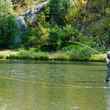





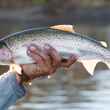
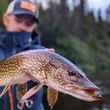



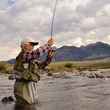




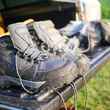
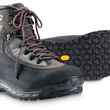



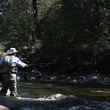


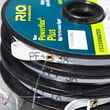
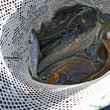
Comments
Troy H Jean replied on Permalink
I see a lot about the felt sole boots aquatic hitchhikers... There are so many ways other than felt sole boots for this to take place... The safety factor of felt in my opinion way out weighs the fact that your gear and I mean all of it needs to be cleaned in a manner as to not transport aquatic hitchhikers to the best of everyone's ability... Even these boots as stated in this review as to the fact that they would grab the line... When fishing different areas, clean your gear with a little bleach in some water to the level of about 10% bleach I would think would be a much better solution to the problem. Just my opinion... :)
Pages